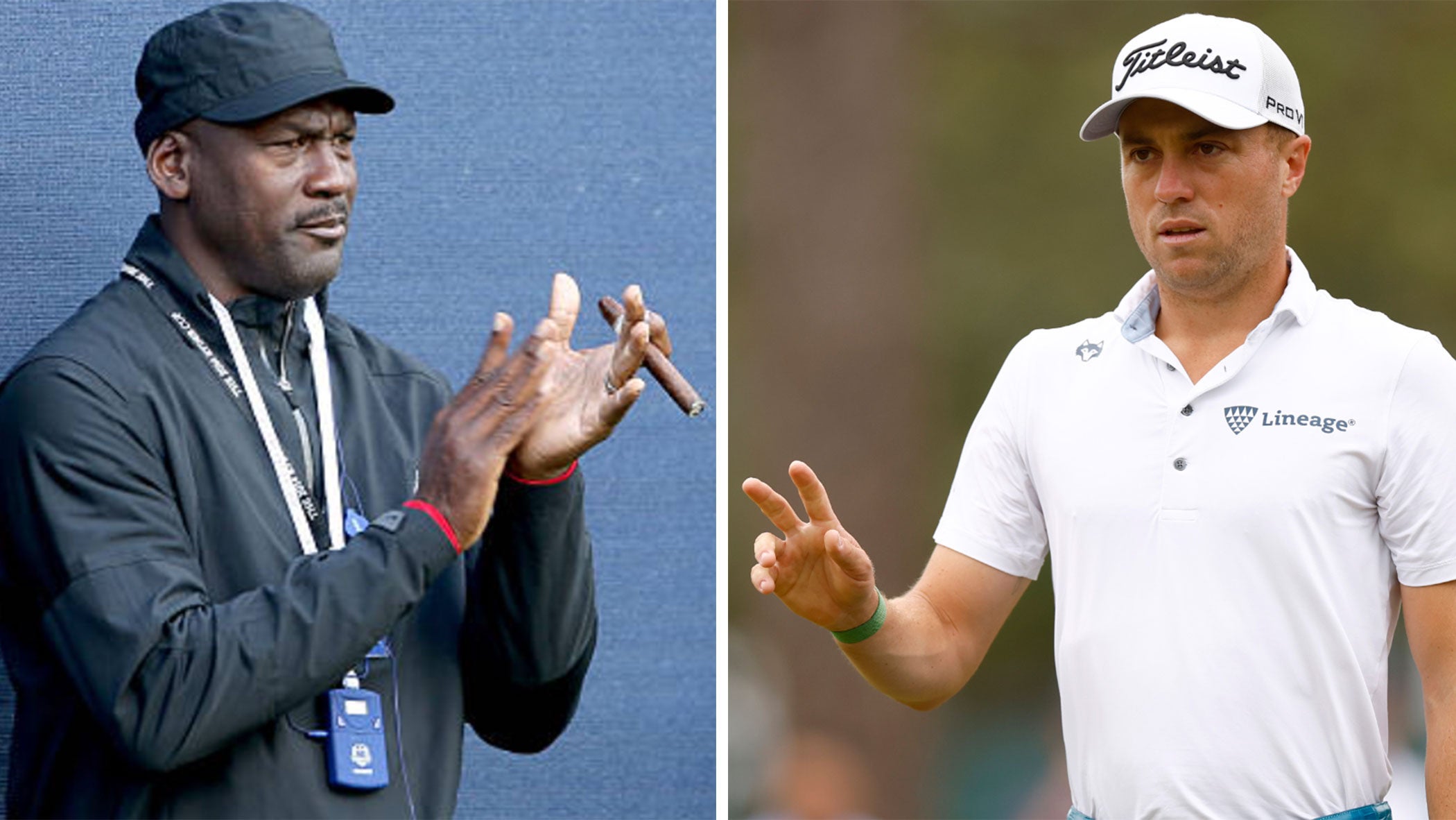At Panther National, Justin Thomas’ first design credit coming into view

Justin Thomas, right, and Dominik Senn on a recent Panther National visit.
Ashley Mayo
On a recent afternoon, Justin Thomas gazed out what will become the sprawling practice green at a new course he is helping to design just inland from his Jupiter Island, Fla., home. He nodded his head in approval, then turned to his right.
“You like golf course architecture?” he asked me.
I nodded before quickly volleying the same question back to him.
“Oh, yeah,” he said, as if there were any doubt.
Within a few hours it became clear there was no doubt. Thomas had flaunted some of his design acumen that morning, explaining why Innisbrook is one of his favorite courses on the PGA Tour schedule and what “fair” looks like to the best players in the world. But later that day, as he took his latest scouting mission at Panther National, a Jack Nicklaus Signature design that Thomas is consulting on and which is now just eight months from opening, Thomas showed just how involved he really is. (Nicklaus Design and GOLF.com are affiliates of 8AM Golf.)
Thomas is a big name in golf. But the Panther National design team stresses he wasn’t brought in only for his star power. (Thomas actually invested his own money in the project, and millions at that.) The two-time major winner has been providing valuable insights through the lens of a modern, elite player. He has offered input on features like the slopes of downhill par-5s and the deception of sight lines from the deepest tee boxes; he even helped design a driving range that the world’s best players would want to visit.
As our trio of Kabota all-terrain vehicles retraced the 11th hole in reverse, Thomas’ value to Panther National began to crystallize. The hole is a 600-plus-yard par-5 that is meant to play a bit like the 18th at Kapalua. In other words, if you can find the speed slot, your tee ball may roll out to 400 yards. The one problem Thomas recognized months ago was the downslope wasn’t reachable.
“It says 650 yards on the scorecard but it was really just a 125-yard par-3” he said, meaning it didn’t matter where your first shot went or how far your approach was from the hole. After two strokes, most balls were going to cumulate into the same basin. That’s no good. So Thomas requested a reshaping of the hill that tee balls would land on, cutting away dirt from the left side. If you find the fairway out to the right, it’s probably going to be a lay-up. But if you can funnel it through left side of the fairway, suddenly you can gain another 60-70 yards on rollout. Now it’s gettable in two.
Says Scott Hedge, the project’s VP of development: “That’s what he brings to the table, that experience. How you play in today’s game.”

The alterations cost around $250,000, but they’re exactly what the team wants from Thomas, who also helped lead adjustments to the 9th and 16th holes. As we crest the 11th tee box, one of the high points on the property, I ask Thomas about his design philosophy. Put simply, he said, it’s not about length.
“I just like the kind of golf that rewards good play and penalizes bad play without making holes stupid,” he said. “It doesn’t need to be a 530-yard par-4 to be hard. It just needs to be properly designed. You look at a hole like No. 4 at Sawgrass. It’s a freaking 5-wood and a wedge, but you see 6s. Fives and 6s every single day. It’s holes like that that I love.”
Thomas made a 6 on No. 4 at the Players Championship just two weeks ago. He’s still annoyed by it. But he loves that the hole makes you think, especially on the tee box.
By his own admission, Thomas, who turns 30 next month, is no design expert; there’s still plenty he needs and wants to learn about the nuances of architecture. But Panther National has helped greatly in that education. The inspiration behind the project comes from developer Dominik Senn, who on this day was showing Thomas all the changes that have happened since Thomas’ last visit. Nicklaus, who also lives locally, drops by the property a couple of times a week, providing new learnings for Thomas to glean whenever he stops by on his own monthly (or so) visits. For example, Nicklaus prefers to angle greens on uphill approaches to deceive players on the depth of hole placement.
“I never would have thought of that,” Thomas said.
He’s still learning, but the architecture bug has fully infected him. Thomas wants to do a course with Tiger Woods. And Gil Hanse, too. He’s enjoyed offering his opinions on how courses can and should challenge elite players, he said, but doing so at his own pace and commitment. After all, he does have another day job that keeps him busy.
“This is the perfect way to do it,” Thomas said.











